Equipment & Devices For Children With Cerebral Palsy
A number of physical impairments and disabilities can result from cerebral palsy, which make it hard for a child with this condition to walk, speak, eat or perform other activities. Over time, these disabilities may also have a cumulative effect on the individual’s mental and physical health.
Fortunately, advancements in technology have led to the development of specialized equipment and devices that enable children and teens with cerebral palsy to live life as independently as possible. Most of these assistive devices are available in different designs, sizes, and shapes to address the unique needs of every child or teen with CP for their safer and easier transition into adult life.
Physical therapy may sometimes be used together with these tools for more effective use. A child with cerebral palsy can learn from a physical therapist about how to correctly use their adaptive device. This can increase the child’s ability to participate in academic, recreational, and social activities and improve their overall quality of life.

Benefits of Adaptive Equipment for Children with Cerebral Palsy
- Improved physical health, fitness, and organ function
- Inclusion in physical activities, sports, and recreation
- Improved ability to express thoughts, feelings, and emotions
- Better communication skills and responsiveness
- Caregivers no longer have to second-guess the child’s needs
- More independent and self-sufficient lifestyle
- Increased self-esteem and self-confidence
- More engaging and enriching social life
- Improved academic performance and learning
- Enhanced reading, writing, comprehension, and vocabulary
- Better career and earning opportunities in adulthood
Types of Assistive Devices and Equipment for Children with Cerebral Palsy
Numerous scientifically designed adaptive tools, devices and equipment are available today to help children with cerebral palsy lead a more independent life. These low-tech and high-tech aids can assist them with everything from speaking to taking a bath to driving a motor vehicle.
Wheelchairs
A wheelchair is one of the most effective mobility solutions for a non-ambulatory CP patient. Wheelchairs can either be manual or power-driven. In a manual wheelchair, the user propels it with own hands, or a caregiver can push it from behind. Power-driven wheelchairs move automatically with an electric motor.
Wheelchair design may have a rigid frame (which will take up more space because it cannot fold), a folding frame, or a reclining frame for more comfort. While a manual wheelchair is more affordable, the user should have adequate strength in the upper body to propel it. Power-driven wheelchairs are more convenient and are particularly useful for children or teens with cerebral palsy who wish to have a more active lifestyle.

When buying a wheelchair for a child with CP, you should consider:
- Whether power or manual model is more suited
- Whether the wheelchair will be used outdoor, indoor, or both
- Frame, weight, and design of the wheelchair
- Seat height, width, cushioning
- Arm rest and foot rest – removable, adjustable, or fixed
- Type and size of tires
- Type of battery (in case of a power wheelchair)
Power Scooters
A power scooter is usually a more cost-effective alternative to a power wheelchair. It may be well-suited for a child or teen with CP who lacks upper body strength or shoulder stamina to operate a manual wheelchair, but wants to independently enjoy time outdoors.
Electric scooters are designed to help children with cerebral palsy develop stability and movement. The design include three or four wheels, have padded seating, foot rest and foot pedal, and strong handlebars to operate the device in different directions.
Although a power scooter design is more compact compared to a motorized wheelchair, it has a longer frame which makes it relatively hard to maneuver. It also does not provide accessories, such as a headrest, which a wheelchair can provide. The weight of this mobility aid is also heavier, which makes it difficult to carry or transport.
However, electric scooters might make children with CP feel better about themselves because the stigma associated with it would be less than that with a wheelchair. (Parents should note that despite the increasing awareness about cerebral palsy, children with this condition continue to face the risk of being targeted by bullies.)
Strollers
When a child with CP has weak trunk muscles and requires support to sit upright, they may benefit from a specially designed cerebral palsy stroller. The stroller will provide a soft chest harness to assist the child sit upright. The extra padding in these strollers makes the seat cushy and supportive. Additional head cushion and lateral pillows may be provided to keep the child’s body securely in position, and prevent them from swinging from side to side. Other key features in these strollers may include:
- Robust frame to provide stability and hold up under strain
- The seat and other components are adjustable to growth
- Spring shock absorbers for a comfortable ride
- Adjustable straps and footplates
- A gentle lap belt and chest harness
- Indoor swivel wheels
Walkers

Children with CP often face difficulties in maintaining posture and balance during mobility. Walkers can be a useful assistive device to tackle these issues. The walker is designed in a way to enable the child to wear the upper body weight on their legs. This may help improve bone strength and density, while reducing the risk of osteoporosis and fractures. Some of the walker models available for children with CP include:
- 2-Wheel Posture Control Walker: This walker has four posts, out of which the front two posts have wheels, while the rear posts have rubber tips. Rubber tips in the posterior part allow for better movement control and slower walking.
- 4-Wheel Posture Control walker: These types of walkers have wheels on all four posts. These are more appropriate for children who have relatively less severe impairments related to posture and balance.
- Chest Support Walker: This walker also has a wheel on each of the four posts, but it additionally includes a chest-support system to provide stability to the trunk. It is suited for children with CP who don’t have the arm strength needed to operate the walker, but can support their body weight on their legs.
- Suspension Walker: Each of the four posts in this walker has a wheel, but it additionally includes a suspension frame over head. The suspension frame has a harness with a power lift attached to it, which enables the child to control the amount of weight they can bear on their legs. This walker is helpful for kids with posture and balance issues due to cerebral palsy.
Gait Trainers
This device with four wheels is designed to help a child with cerebral palsy augment their mobility, maintain momentum, and develop muscle skills. A built-in seat in a gait trainer allows the child with CP to switch between sitting and standing frequently and easily. Add-on components for trunk support, attachments for head support to build head control, and a harness to improve posture are usually available with a gait trainer.
The appropriate gait trainer model and components should be chosen with the help of a physical therapist. In the beginning, the use of a gait trainer may be limited only to therapy sessions. The therapist will then set the parameters for the use of the equipment at home. As the child’s strength and function gradually improve, the physical therapist may remove the individual components one by one.
Walking Sticks, Canes, and Crutches
Canes
Canes and walking sticks can provide stability and support for children with relatively milder effects of cerebral palsy. Patients with monoplegia (paralysis in one limb) or hemiplegia (paralysis in one half – left or right side – of the body) can benefit from these simple assistive devices. Walking sticks and canes are usually adjustable according to the child’s height. Options include:
- Folding canes
- Non-folding canes
- Folding seat canes (the device folds out to a seat when the child is tired)
- Tripod or quad base (creating a more effective base for support)
Crutches
Children and teenagers with cerebral palsy who can walk or ambulate, but require assistance with stability and balance can make use of crutches. Crutches are primarily of two types: elbow or forearm crutches and underarm crutches.
Individuals with cerebral palsy mostly use forearm crutches (underarm crutches are more appropriate for short-term disability). As the name suggests, forearm crutches attach to the elbow or forearms to provide extra balance. However, this device is not designed to handle the user’s full body weight.
Standers
Standers enable a child with cerebral palsy to stand for brief or extended time periods. The device is designed to provide stability and support the user’s body weight while they are in an upright position. Standers facility muscle and bone development through weight bearing in the legs, promote the use of lower extremity, improve bladder and bowel functions, and help the child to engage better by being at eye-level with their peers.
- Sit-to-Stand Standers: True to their name, these standers help the child with cerebral palsy switch from sitting to standing position, and back. The child should have some truck and head control to be able to use this device.
- Mobile Standers: This assistive device allows the child with CP to stand upright and propel forward. To enable the propel movement this stander may come with pulleys, or large wheels on either side, or a motorized option.
- Active Standers: This is a newer alternative to mobile standers, and comes with a sit-to-stand option. The child can use either the legs or arms or both to operate the stander. For independent use, the child should have upper body strength and some head control.
- Position Standers: Children with CP often use position standers, which are available in three types: supine, prone, and multi-position. The supine stander will position the child on their back, while the prone stander will position them on their abdomen. Multi-position standers allow for both supine and prone positions.
Lifts
Lifts help children and teenagers with cerebral palsy support their body weight when they have difficulty in transferring between locations or devices. Lifts are also useful for caregivers to assist with positioning and transfers. Manual or power lift options that are helpful with CP include:
- Sit-to-Stand Lift: This will help the child switch from a sitting to standing position. It is also helpful for toileting and transfers.
- Floor Lift: This versatile device can help with various lifting needs, such as moving the child from one room to another.
- Ceiling Lift: It operates on a track system installed in the ceiling. A ceiling lift will help transfer the child from room to room or device to device.
- Stair Lift: This equipment will carry the child with CP up and down the stairs. It is installed in the staircase at home for safe movement.
- Transfer Lift: This lift has multiple uses, such as helping the child or teenager with CP transfer from bed to wheelchair, or wheelchair to a car.
Adaptive Tricycles

For a child or teenager with cerebral palsy, riding a two-wheeler may not be possible, but parents or caregivers may consider the option of an adaptive tricycle. Therapeutic cycling with this device can help build anti-gravity muscles, promote respiration, improve truck and head control, and increase hand-eye coordination.
Also known as therapy trikes, these adaptive devices with three wheels are available in multiple sizes to fit the needs of toddlers, kids of an elementary age, and teenagers. Options of standard and wheelchair-style seating may be available. Handlebars are modifiable for better control in these tricycles. They also feature self-leveling pedals and wrist straps.
- Handcycles: Powered by hand cranks, these three-wheeled cycles are appropriate for children with cerebral palsy who have limited mobility in the lower limits. At the Paralympics, handcycling is recognized as an official sport.
- Adaptive Stationary Bikes: Kids with cerebral palsy can utilize an adaptive stationary bike to improve cardiovascular health and strengthen lower extremity muscles through resistance exercise. These bikes come with ankle braces and straps and a restraint mechanism to support the upper body.
- Recumbent Bikes: These adaptive bikes usually have a large wheel in the front and two smaller wheels in the back. This device allows a child with CP to ride a bike with a reclining seat facilitating weight distribution. Recumbent bikes can help with stiffness and weakness in the arms, back and neck for children with cerebral palsy.
Orthotic Boots
This cerebral palsy footwear is designed to provide stability to the feet and legs so that the child or teenager can have better mobility. As certain muscles in children with CP can weaken over time or remain underdeveloped because of disuse, orthotic boots can help in building muscle tone. Supportive components in orthotic boots are often custom-created and may be made from leather, metal, plastic, or carbon fiber.
Cerebral Palsy Braces
A cerebral palsy brace is designed to help children build muscle tone and improve mobility. It assists with stability as well as allows for the stretching of over-tight musculature. Braces are available for hands, wrists, arms, legs, knees, hips, and other limbs affected by CP. The device may be made from plastic, metal, leather, or fusion materials. CP braces should be used with the guidance of an orthotic specialist and the child’s physician.
Ankle-Foot Orthoses (AFO)
An AFO is designed to provide support for the weak leg muscles in kids with cerebral palsy. It will hold the leg with stiff muscles in a comfortable but firm position. The child may wear an AFO on the foot, lower leg, or both. Custom fitting is vital, and parents should seek professional assistance from a physical therapist or the child’s doctor.
Depending on the level of support required, a professional may recommend an AFO with a sturdy or pliable design. AFOs usually include plate that slides into the shoe to help maintain foot level.
Bath Chair
Traditional bath chairs may not offer support for the back, neck, and arms. Therefore, children and teens with cerebral palsy can use specially designed CP bath chairs. Some of the commonly used options in cerebral palsy bath chairs include:
- Bath Overlay: These are removable trays placed across the rim of a bath tub. The overlay sits under the faucet, allowing the water to drain into the tub underneath.
- Bath Lift: A range of manual bath lifts and hoists are available for children with CP, which support them to sit in a full or semi recline position to take a comfortable bath.
- Adjustable Height Bath: This is a cerebral palsy bath seat with electrical or mechanical adjustments to lower or heighten the bath for an easy shower.
- Bath Seats and Boards: The bath seat spans the rim of the tub with a platform. It includes grab rails for handholding support to securely transfer the child in and out of the bath tub.
Toilet Chair
Toilet training for children with cerebral palsy can be a stressful experience. Specially designed toilet chairs for a child with CP can provide additional support and mobility control in order to make potty training easier for the child and the parents. Toilet chairs for children with CP include straps and harness as well as head and neck support to help them sit upright. The chair height is usually adjustable according to the child’s growth.
Adaptive Bed
An adaptive bed for a child or teen with cerebral palsy is important to ensure they don’t fall off or get their limbs entangled in the railings, mattress, or bed frame. The adaptive bed should meet the FDA guidelines for the seven entrapment zones. These beds are usually available in standard, twin, or full sizes. The box spring and mattress are generally included with the bed.
The mattress should ideally be waterproof, include an anti-bacterial cover, and should be designed to mitigate the risk of pressure sores. Some of the adaptive bed models may feature electronic adjustment to enable the child to position their heat and feet at specific angles for a healthier sleeping position and better comfort.
Weighted Blankets
Weighted blankets are similar to quilts, filled with glass beads, poly pellets, or other materials. Each section of the weighted blanket is designed to distribute the weight evenly over the user. For a child or teenager with cerebral palsy, this device can help soothe some of their spastic movements.
According to occupational therapists, the ideal weight of a weighted blanket is about 10% of the user’s body weight plus an additional one to two pounds. Weighted blankets may not be safe for babies below the age of 18 months because of the risk of suffocation.
Car Seat
Cerebral palsy affects a child’s motion control. This makes it vital to have a custom-built or modified car seat with harnesses for their safety during a ride. If the child with CP has limited upper body strength or lack of head control, an upright forward-facing car seat may prove to be less supportive for them. Therefore, a rear-facing seat may be designed for their safety.
Based on this, once the child has outgrown the rear-facing car seat, a specially designed medical seat or large car seat may be used, which supports their complete trunk. This seat should have the option of recline while forward facing. When the child is seated in this position, they can lean back their head while maintaining a clear airway.
Assistive Technology for Cerebral Palsy
Many children and teens with cerebral palsy experience challenges with communication. A number of assistive and adaptive technology devices are now available to help children overcome communication issues.

Communications
Enables students to share ideas and feelings without talking.

Timers
Helps students prepare for new or changes in tasks

Computer Access
Activate computers with alternatives to traditional mouse & keyboard.

Switch-Adapted Toys
Encourages cognitive development through play.
Digital Communication Board
This device is similar to a tablet and is powered by a special software program or app. The digital communication board will present before the child a choice of pictures, letters, words, and numbers. The child with speech related concerns can select from the given options in order to communicate with others. The child may initially require help from a language or speech therapist to successfully use the digital communication board.
Speech Generating Device
A speech generating device functions to produce digital speech for children with cerebral palsy who have difficulty speaking. The child can simply tap or type the words or sentences, the device will convert it into speech. Technically called voice output communication aids (VOCA), these devices can support the child’s current communication approaches, such as facial expressions, gestures, and sounds.
Eye Tracking Device
Children and teens with CP who have limited or no mobility in the fingers, hands or arms to tap the figures on the communication board screen may use eye tracking devices. This device tracks where the user’s eyes are moving or focusing on. When the child simply looks at the desired image, word or number on the digital communication board, it gets auto-selected without any requirement to actively touch the screen.
Hearing Aids
Children and teens with cerebral palsy may sometimes struggle with severe hearing deficits, which may not be addressed with standard hearing aids. In these cases, a cochlear implant may be considered. This tiny device is inserted underneath the skin inside the child’s ear, while an external piece is placed behind the ear. The implant stimulates the auditory nerves, which bypass the ear’s damaged tissue that is preventing hearing.
Advanced assistive listening systems are also available for children with hearing impairment. These sensitive devices will capture the sound in a room, amplify it, and send it to the ear. Children with cerebral palsy may be able to use these systems in the classroom to hear the teacher speaking even when there is noise in the background.
Tablets and Smartphones
Advancements in mobile device technologies have opened a new world of possibilities for children and teens with cerebral palsy. Numerous apps are available from the manufacturers of these devices as well as from external app developers that support life skills, education, converting speech to text or text to speech, reading books, browsing websites, and more.
Speech recognition software programs can turn a smartphone or tablet into a speech recording device. Social skill builder apps present real-life scenarios through interactive videos asking the child to answer questions and apply their judgment. Creative online games help children with CP develop learning skills, while the child controls the commands simply by tilting the mobile device.
Robotic Exoskeletons: Next Generation Technology for Children with CP
Robotics and artificial intelligence promise to be the next frontier in technology, which may assist children with cerebral palsy and dramatically improve their quality of life. One of the recent developments in this field is robotic exoskeletons. It is a new type of physical therapy targeted at children with cerebral palsy.
This wearable device combines machines, electronics, and robotics to help improve physical movement. The exoskeleton aims to build muscular strength and improve muscle-brain coordination for the user to help them stand and walk independently. The robotic device teaches the wearer which muscles to use more often, thereby helping strengthen those muscles.
The device also helps enhance nerve connections to build the child’s muscle memory. These two elements (muscle strength and muscle memory) are both required for the child with CP to eventually walk on their own. The scientific principle behind this technology is that the more frequently we repeat a physical action, the faster our brain fires neurons that tell the involved muscles what to do.
This neurological process is known as muscle-brain connection or muscle memory. However, children with CP may not develop these nerve pathways, which limit their ability to walk. The robotic exoskeletons provide an opportunity to the child to practice walking and build muscle memory in a safe environment. The robotic suits can be customized to each unique motion and muscular needs.
Choosing the Right Assistive Device for Your Child
With a growing range of assistive devices and equipment for children with cerebral palsy, it may be prudent to seek professional help for selecting and using the right technology for your child. You may reach out to one or more of the following professionals for guidance:
- Your child’s doctor
- Physical therapist
- Occupational therapist
- Behavioral therapist
- Speech therapist
- ATP or assistive technology professional, who is certified to help match users with the appropriate assistive or adaptive devices
Is Your Child’s Cerebral Palsy the Result of Medical Malpractice?
Parents whose children suffer from cerebral palsy deserve an answer to how their child developed this condition and whether it was preventable. Our dedicated birth injury lawyers want to help you find those answers.
If your child has been diagnosed with cerebral palsy, and you suspect this may have been caused in part by medical mistakes, Miller Weisbrod Olesky will thoroughly investigate the facts and hold responsible medical providers accountable by pursuing medical malpractice claims against them. The compensation our clients receive helps them pay for their child’s current and future medical treatment, therapy, equipment needed to help cope with disabilities, and the other expenses associated with caring for a child with brain injuries, seizure disorders, organ damage, speech, vision, hearing or motor impairments, and cerebral palsy.
Sometimes families are hesitant to reach out to a medical malpractice attorney or law firm. Other parents feel overwhelmed by their circumstances and worried that they will not be able to help out in a lawsuit involving their child’s birth injury.
Miller Weisbrod Olesky is different from most law firms.
We provide help NOW.
Many attorneys focus only on pursuing their client’s legal case. At Miller Weisbrod Olesky, we know your child needs help today – not just when your birth injury lawsuit is settled. We have a team focused on helping our clients NOW when they need it most.
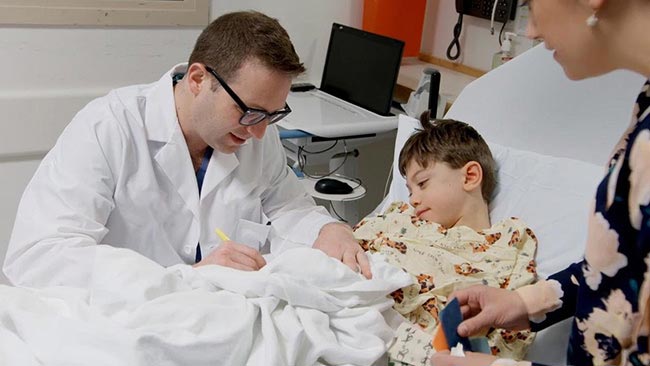
We know that children with birth injuries like hypoxic-ischemic encephalopathy (HIE) and cerebral palsy often require intense therapy, specialized medical treatment, and assistive care. The stress of providing for a birth injured child’s needs can be both emotionally and financially draining.
But just ‘knowing’ this is not enough. We act on this knowledge by providing exceptional services to birth-injured children and their families.
While Miller Weisbrod Olesky’s birth injury attorneys aggressively prepare each legal case, another department goes into action to help the families of children we represent. Led by a nurse-attorney, this department acts as a medical case manager for our birth injury clients by:
- Regularly monitoring the child’s medical treatment status,
- Helping facilitate medical treatment and therapy, and
- Arranging transportation and services.
Where necessary, we also help families locate local medical providers specializing in the care and treatment of children who have suffered a birth injury. With Miller Weisbrod Olesky, you’re not just a ‘case’. And that’s important when you’re looking for a lawyer who can help you cope with your child’s needs today.
Please call or email us today to get started.
Registered Nurses and Nurse-Attorneys Are a Vital Part of Our Birth Injury Team … and Yours
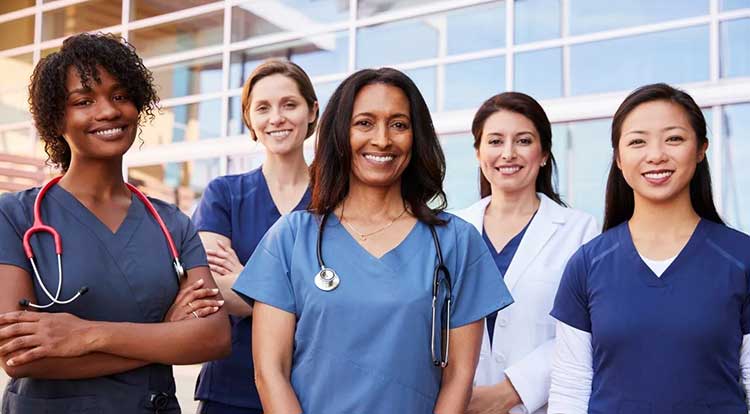
Most national birth injury law firms will employ one or two nurses to assist the review of cases and medical research. But Miller Weisbrod Olesky offers an unmatched number of nurses and nurse-attorney employees support to both the birth injury attorneys and our clients.
Our team of registered nursing staff and nurse-attorneys bring a deep level of medical and personal insight to every client’s case. Our nursing team includes both an experienced labor and delivery nurse as well as an ICU nurse. Working closely with the rest of the team, they investigate the reasons behind a birth injury and how medical professionals breached their standard of care.
Meet our Legal Nursing Team
Linda Chalk
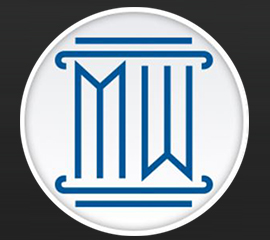
As a registered nurse, Linda practiced ICU nursing for 44 years while caring for a wide range of patient conditions. She has worked closely with founding partner Les Weisbrod for over 30 years, investigating and pursuing birth injury cases.
Along with DJ Weisbrod, Linda heads up the firm’s birth injury intake, screening, and medical literature research team. She personally screens all potential cases to ensure that medical issues have been addressed before we file lawsuits on behalf of birth-injured children and their families.
DJ Weisbrod
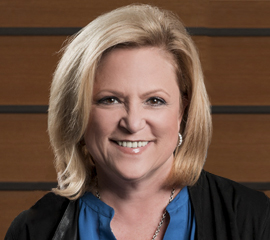
Before joining Miller Weisbrod, DJ practiced as a surgical nurse in various hospital and operative settings. She has been with the firm over 30 years.
DJ directs Miller Weisbrod’s birth injury intake and medical screening team. She has also served as firm founder Les Weisbrod’s trial nurse for all cases involving medical negligence and birth injury.
Linda Cuaderes

Linda Cuaderes is both a registered nurse and a licensed lawyer. Linda works exclusively in Miller Weisbrod’s Birth Injury and Medical Malpractice section. Linda acts as the firm’s patient advocate and liaison with our young clients and their parents.
Linda combines her legal and nursing experience along with her exceptional organizational talent and attention to detail to make sure each child we represent is provided the highest level of medical care and attendant care during the pendency of their case. Linda communicates with our parent clients regularly to monitor their birth injured child’s treatment, provide guidance as to additional care and therapies and when necessary assist them in obtaining specialized medical providers.
Linda was raised in Bartlesville, Oklahoma and completed her Bachelor of Science in Nursing with Honors at the University of Oklahoma. She started as an Oncology Nurse at Presbyterian Hospital in Oklahoma City, quickly becoming the Assistant Head Nurse of the Outpatient Endoscopy Unit. Linda then entered the University of Oklahoma College of Law.
Following graduation, Linda joined Les Weisbrod in the Medical Malpractice Section. After taking time off to raise her three lovely children, Linda returned to Miller Weisbrod and her passion of holding healthcare providers accountable for preventable errors. Linda is active in the American Association for Justice, Texas Trial Lawyers Association, Dallas Trial Lawyers Association, and the Texas Bar Association. Linda is an active member of the Birth Trauma Litigation Group and Medical Negligence Section of the American Association for Justice.
She is admitted to practice before the Texas Supreme Court and routinely works on cases pending throughout the United States. Linda has worked with child victims of birth injury, their parents and other victims of medical malpractice in Texas, New Mexico, Oklahoma, Arkansas, Louisiana, Iowa, Ohio, New York, Alabama, Georgia, Arizona, Utah and Missouri.
Education
- University of Oklahoma - School of Law, 1990, J.D. - Norman, Oklahoma
- University of Oklahoma - School of Nursing, 1985 - Norman, Oklahoma
Areas of Practice
- Birth Injury/Birth Trauma
- Medical Malpractice
Associations & Memberships
- Texas Bar Association
- American Association of Justice
- Texas Trial Lawyers Association
- Dallas Trial Lawyers Association
Kristin Jones
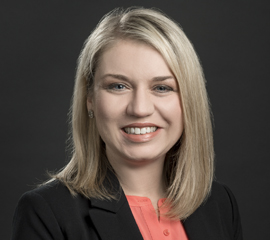
Kristin combines her medical and legal training to provide invaluable, passionate service to parents struggling to care for their birth-injured children.
Families often have questions as they go through the birth injury lawsuit process. Kristin diligently identifies and investigates all medical issues so the birth injury attorneys at Miller Weisbrod can answer those questions Kristin ensures that our birth injured children’s medical records are thoroughly reviewed and organized. Miller Weisbrod’s birth trauma litigation attorneys and medical experts retained by the firm need her services while pursuing justice for our clients.
Kelly Kunkel

Kelly Kunkel was born and raised in Dallas, Texas. She has 15 years’ experience in hospital based High Risk Obstetrics and Labor and Delivery bedside nursing care. Kelly graduated with an Associate’s Degree in Nursing from El Centro College in December of 1990 and received her Bachelor’s Degree in Nursing from West Texas A & M University in 2008; graduating with honors.
In addition, Kelly has over 25 years’ experience in medical malpractice case management and litigation and has worked with David Olesky for over 22 years. After many years of assisting in defending healthcare providers and hospital systems in medical malpractice cases involving complex litigation matters related to birth injury, catastrophic injury and death, Kelly has proudly joined David Olesky in the national birth injury and medical negligence practice at Miller Weisbrod Olesky.
Why Should You Talk with the Knowledgeable Attorneys at Miller Weisbrod Olesky?
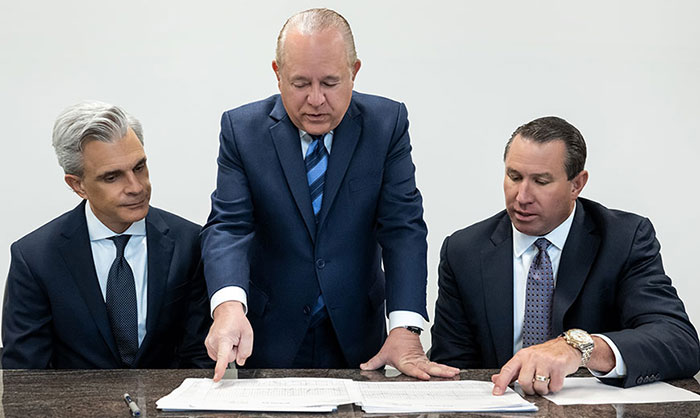
The only way to find out if you have a birth injury case is to talk to a medical negligence attorney who understands how ischemia occurs during labor and delivery, birth and shortly after birth if baby’s are not correctly monitored, diagnosed and treated.
At Miller Weisbrod Olesky, a team of committed attorneys, nurses and paraprofessionals uses our detailed medical negligence case review process to assess your potential claim. We start by learning more about you and your child and the status of meeting or missing developmental milestones. Then we gather medical records to determine what happened before, during, and after your delivery. We call in skilled medical experts who review your records and let us know if they think medical errors could have caused your child’s injuries.
If we feel medical negligence caused or contributed to your child’s injuries, we meet with you to discuss how you can receive compensation from the medical professionals who made the errors.
At no point in our legal intake process will we ask you to pay anything. The medical review of your case and the consultation are free. We only receive payment when you do.
Contact Our National Birth Injury Lawyers
Our Birth Injury Attorneys
Les Weisbrod
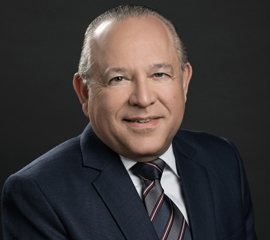
Les Weisbrod has been on the cutting edge of the national birth injury litigation scene for almost 40 years.
As a national birth injury attorney, Les has settled over 204 medical negligence cases for more than $1,000,000. He also obtained settlements in 75 birth injury cases for over $1,000,000 each.
His $31 million verdict against Baylor University Medical Center in Dallas was one of the top 100 verdicts in the United States that given year.
Les is recognized nationally and internationally as one of the top plaintiff’s medical malpractice trial lawyers in the United States. But the recoveries for the clients and the differences made in the lives of the children and families Les has represented tell only part of the story.
Les has worked with his law partner Clay Miller for years to build a one-of-a-kind law firm.
Miller Weisbrod Olesky provides unique and unparalleled services to families of birth-injured and brain-injured children from the moment the firm decides to take the case.
The registered nurses and registered nurse-attorneys on staff are valuable team members who assist Miller Weisbrod birth-injury clients. Les has designed a system where each birth injured child is assigned a nurse-attorney liaison to guide them through the process of medical treatment/evaluation, therapies, home assistance, and quality of life improvement.
Miller Weisbrod’s unmatched service allows families to better cope with the immediate challenges facing our young clients.
Birth-injured children and their families are Les and Miller Weisbrod’s priority.
Les and the attorneys at Miller Weisbrod fight for the justice their clients are entitled to under our nation’s system of justice.
This fighting spirit has taken Les across the United States to represent clients in birth injury and medical negligence cases. In fact, he has personally handled cases not only in Texas but also in Arkansas, Arizona, Colorado, Oklahoma, Louisiana, Utah, Iowa, Ohio, Oregon, Montana, Alabama, Georgia, Florida, and New York.
Les and Miller Weisbrod continue to expand their reach of helping brain-injured children to new states each year as we strive to bring a sense of justice to each affected family. And Les is not the only one who notices he fights for his clients.
Michael Rustad, a Professor of Law at Suffolk University Law School in Boston who has done extensive research on punitive damage awards, says,
“Les Weisbrod has obtained more medical malpractice punitive damage jury verdicts for his clients than any other attorney in the United States.”
Also, a well-known defense medical malpractice attorney dubbed Les Weisbrod the “pitbull” of the Texas medical malpractice bar in a media profile of Les published by a major newspaper.
Les shares his experience and knowledge to improve the representation of all birth-injured children and their families.
In the early 1990s, Les recognized that a more focused effort needed to be made to educate attorneys who handle birth injury cases. As a result, Les was the founding Co-Chair of the American Association for Justice (AAJ) Birth Trauma Litigation Group in 1991. He also was a founding Co-Chair of AAJ’s Medical Negligence Litigation Group in 1999 and served as Chair of AAJ’s Professional Negligence Section in 1996.
Combined, these groups have put on more than a hundred continuing education seminars across the United States. helping to educate other attorneys by bringing in world-renowned experts in the fields of:
- labor and delivery
- neonatal care
- the care and treatment of birth-injured children, including those suffering from cerebral palsy and hypoxic-ischemic encephalopathy (HIE)
Education and professional experiences back up his dedication to helping children and families harmed by medical malpractice.
Les received his B.A. magna cum laude in 1975 from Claremont Men’s College and his J.D. in 1978 from Southern Methodist University Law School.
He is Board Certified by the Texas Board of Legal Specialization in Personal Injury Trial Law and Civil Trial Law.
Les was a past president of the Dallas Trial Lawyers Association in 1993. He has been a member of the Texas Trial Lawyers Association Board of Directors since 1990.
His work with the American Association for Justice (AAJ) (formerly ATLA) includes serving as President, President-Elect, Vice President, Secretary, Treasurer, and Parliamentarian. Mr. Weisbrod has also served on the AAJ Board of Governors since 1998 and the 17-member Executive Committee of AAJ since 2001. In 1990, he was chosen as a Rising Star of the ATLA and presented a paper entitled “Dirt and Greed: A New Look at Medical Malpractice Cases.”
Les has written and lectured extensively on birth injury litigation, medical malpractice, and medical product topics.
Les is a contributing author to the 1996 text Operative Obstetrics published by Williams & Wilkins. He also co-authored the “Drugs & Medical Devices” chapter in AAJ’s Litigating Tort Cases.
He also has lectured to lawyer groups across the U.S., Canada, England, and Australia.
Education
- Southern Methodist University - School of Law, J.D. - Dallas, Texas, 1978
- Claremont Men's College - B.A. - Claremont, California, 1975
Areas of Practice
- Medical Malpractice
- Birth Injury/Birth Trauma
- Products Liability
- Personal Injury
Associations & Memberships
- State Bar of Texas
- National Association Of Distinguished Counsel
- Million Dollar Advocates Forum
- Multi-Million Dollar Advocates Forum
- American Association for Justice
- Texas Trial Lawyers Association
- Dallas Trial Lawyers Association
- Pan-European Organization of Personal Injury Lawyers
- American Society of Law and Medicine
- Consumer Attorneys of California
- Arkansas Trial Lawyers Association
- Louisiana Trial Lawyers Association
- Dallas and American Bar Associations
- ABOTA (American Board of Trial Advocates)
Clay Miller

Clay is Board Certified in Personal Injury Trial Law by the Texas Board of Legal Specialization. Clay has practiced solely in the field of catastrophic injury and wrongful death since graduating from law school. His practice has been limited to the representation of victims. Over the past twenty-four years, Clay has successfully settled or tried to verdict cases in the areas of vehicular negligence, medical malpractice, construction site accidents, workplace injury, premises liability, and commercial trucking and a nationwide business loss case (suits filed in a dozen different states) involving defective truck engines sold to trucking companies.
Clay represented dozens of trucking companies in lost profit and diminished value claims against Caterpillar in 2010 through 2012. These cases were filed in over a dozen states with the bellwhether trial set in Federal Court in Davenport, Iowa. After intense litigation and trial preparation, a global confidential settlement was reached for all the clients.
Clay's most recent 2017 victories are a $30,800,000 jury verdict in Tennessee arising from fraud claims in the sale of heavy-duty truck engines and a $26,500,000 jury verdict in a construction accident, obtained within 60 days of each other.
Clay was raised in Lewisville, Texas and completed his undergraduate degree in Finance at
Texas A & M University. Following graduation from Southern Methodist University School of law, Clay worked for two Dallas firms representing victims. In 1998, Clay began his own practice before forming his current partnership. In addition to his law practice, Clay has lectured at seminars and published in the areas of construction accidents, jury selection techniques, medical negligence, trucking accidents and settlement tactics.
He is active in local and statewide trial lawyers' associations including serving as the Chair of the Advocates for the Texas Trial Lawyers' Association in 2002 and remains on the Board of Directors. Clay served as President of the Dallas Trial Lawyers Association from 2008-2009. He has also been a member of the American Board of Trial Advocates (ABOTA) since 2014.
Education
- Southern Methodist University School of Law - Dallas, Texas
- Texas A&M University - Finance - College Station, Texas
Areas of Practice
Associations & Memberships
- State Bar of Texas
- State Bar of New Mexico
- State Bar of Colorado
- American Board of Trial Advocates (ABOTA)
- Texas Trial Lawyers Association
- Dallas Trial Lawyers’ Association
- American Association of Justice
David Olesky
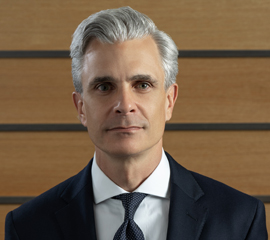
David Olesky is Vice Chair of the Health Care Professional Liability practice. David is a trial lawyer focusing his practice on complex litigation matters that involve defending and protecting clients in all types of cases related to catastrophic injuries or death, but with a special focus on birth injury cases. David regularly advises his health care clients on the issues and challenges that they face on a daily basis. Clients repeatedly look to him for guidance to handle such high stakes cases and matters in Texas and jurisdictions outside of Texas.
David has earned the trust and reliance of clients he has worked with by consistently getting the results that matter most to them, whether that is a win at trial or a favorable outcome through alternative dispute resolution outside the courthouse. Through his representation, David demonstrates a true loyalty and hardworking commitment to the clients that he serves.
David believes the foundation of any client relationship is to act as a trusted advisor instead of simply as a litigator. Clients value his earnest representation of their business interests, accompanied by a devotion to understanding their businesses, prompt attention to their immediate needs and the challenges they face in their individual roles.
Education
- Southern Methodist University Dedman School of Law, J.D., 1992 - Dallas, Texas
- University of Texas, B.B.A, 1989 - Austin, Texas
Areas of Practice
Associations & Memberships
- American Bar Association
- Dallas Bar Association
- Dallas Bar Foundation Fellow
- Texas Bar Association
Alexandra V. Boone

Alexandra Boone is a partner in Miller Weisbrod. She concentrates her legal practice in the area of birth injury, medical malpractice and mass tort products liability. Alex currently works directly with firm partner Les Weisbrod in managing the birth injury docket and working with the firm’s highly qualified expert witnesses in the review of potential cases. Alex also litigates her own docket of medical negligence cases.
Over the course of her 17 years with the firm, Alex has focused on the administration and prosecution of mass tort litigation, originally focusing on occupational toxins, but more recently in the area of pharmaceuticals and medical devices. In the past, she has actively pursed cases involving hormone therapy, Vioxx, Fosamax, and Reglan. Alex was also instrumental in our firm successfully resolving thousands of cases transvaginal mesh, hip prosthetics, and the blood thinner Xarelto. She is actively prosecuting over 1,000 cases.
In addition to being a member of the Texas bar, she is also licensed in Oklahoma and is a member of the American Association of Justice, Texas Trial Lawyers Association, Oklahoma Association of Justice and the Dallas Trial Lawyers Association.
Education
- Baylor University - School of Law, 1996, J.D. - Waco, Texas
Areas of Practice
- Products Liability
- Mass Tort
Associations & Memberships
- State Bar of Texas
- American Association of Justice
- Texas Trial Lawyers Association
- Oklahoma Association of Justice
- Dallas Trial Lawyers Association
Pro Bono Activities
- East Texas Legal Services/Nix Law Firm Pro Bono Project, 1996 - 1997
Robert Wolf

Robert E. Wolf was born in Dallas, Texas and graduated Magna Cum Laude as a proud horned frog from Texas Christian University in 1997, with Bachelor of Science degree in Political Science and was inducted into Phi Beta Kappa and Mortar Board. He obtained his law degree from Southern Methodist University in 2000 while serving as an Articles Editor for the International Law Review and winning awards at Mock Trial and Appellate competitions.
Robert has been named a Thomson Reuters | Texas Super Lawyers Rising Star (less than 2.5% of attorneys in Texas receive this distinction) in 2011, 2012, 2013, 2014, and 2015. Further, Robert was recognized as a National Trial Lawyers Top 40 Under 40 attorney for Texas in 2012 (no more than 40 attorneys in Texas are eligible for this award annually).
Robert brought his passion for and over 14 years of experience of representing seriously injured individuals and their families to Miller Weisbrod in January 2015, and has concentrated his legal practice in the area of medical malpractice, products liability, and pharmaceutical/mass tort litigation. He is a member of the State Bar of Texas, American Association for Justice, Texas Trial Lawyers Association, and Dallas Trial Lawyers Association.
In addition to many successful jury verdicts and settlements across Texas, Oklahoma, Iowa, Wisconsin, and Idaho, Robert’s role as an attorney representing victims and their families has led to numerous changes to key safety practices and policies and procedures at corporations and medical facilities.
Robert and his wife Suzy also get plenty of exercise trying to keep up with their precious and very active daughter.
Education
- Southern Methodist University - Dedman School of Law, J.D. - 2000 - Dallas, Texas
- Texas Christian University - B.S. Political Science - 1997 - Fort Worth, Texas
Areas of Practice
- Medical Malpractice
- Personal Injury
- Products Liability
Associations & Memberships
- State Bar of Texas
- American Association of Justice
- Texas Trial Lawyers Association
- Dallas Trial Lawyers Association
Carrie Vine

Carrie Lynn Vine has over 15 years of experience in medical malpractice litigation, with a particular focus in representing children and families who have suffered birth injuries as a result of the negligence of either doctors, nurses or hospitals.
She is a passionate advocate for her clients and has handled hundreds of birth injury and birth trauma cases throughout the United States. As part of Carrie’s national birth injury legal practice, she has handled cases in Texas, Arkansas, California, Nevada, Kentucky, Georgia, Illinois, Wisconsin, Ohio, Pennsylvania, North Carolina, South Carolina, Florida, and North Dakota. She is determined to seek justice and works to obtain fair compensation for the children and families she represents.
Carrie earned her law degree from Northern Illinois University where she tutored other law students. Prior to law school, she received her undergraduate degree from the University of Notre Dame in Biomedical and Biological Science, and earned both a Master’s Degree and a Ph.D. from The Pennsylvania State University in Anthropological Genetics. She then conducted post-doctoral research at the University of Michigan Medical School before deciding to attend law school. She applies an academic mindset and love of science and medicine to mastering the medical principles and literature relevant to the cases she pursues.
Carrie is an active member of the American Association of Justice as well as the Birth Trauma Litigation Group (BLTG).
Education
- Northern Illinois University:
Law School
- University of Notre Dame:
Biomedical Science
- Pennsylvania State University:
Anthropological Genetics
Areas of Practice
- Birth Injury/Birth Trauma
- Medical Malpractice
Associations & Memberships
- American Association of Justice:
Member
- Birth Trauma Litigation Group:
Member
Larry Lassiter

Lawrence R. Lassiter is an AV-rated attorney with more than twenty years of experience in appellate and trial advocacy. He has been consulted by attorneys across the country to conduct research, evaluate cases, prepare appellate and trial briefs, and formulate litigation strategy. He has prepared hundreds of appellate briefs in federal and state appellate courts, including the highest courts of Texas, West Virginia, Georgia, Oklahoma, Ohio, Nebraska and Tennessee, and he is member of the Bar of the United States Supreme Court. Larry has a national appellate and legal briefing practice. Larry has filed extensive briefs and/or argued before either state or federal courts in 30 out of 50 states in his career.
Larry assists the Birth Injury team in all aspects of legal briefing. Unlike many other birth injury firms across the United States, Miller Weisbrod has an attorney dedicated to handling legal briefing on behalf of our clients across the country. Larry has handled extensive briefing in birth injury and other medical malpractice cases in Texas, New Mexico, Arkansas, Oklahoma, Iowa, Ohio, Alabama, Georgia, New York, Utah, Arizona, Louisiana and West Virginia.
Since joining Miller Weisbrod in 2010, Larry has won a number of important victories vindicating the rights of our clients in both state and federal appellate courts, including Vitacost.com, Inc. v. McCants, 210 So.3d 761 (Fla. Ct. App. 2017); TTHR Ltd. Partnership v. Moreno, 401 S.W.3d 41 (Tex. 2013); In re E.B., 729 S.E.2d 271 (W. Va. 2012); Mid-Continent Cas. Co. v. Davis, 683 F.3d 651 (5th Cir. 2012); Rouhani v. Morgan, 2017 WL 3526719 (Tex. App. – Houston [1st Dist.] 2017, no pet.); Mid-Continent Cas. Co. v. Andregg Contracting, Inc., 391 S.W.3d 573 (Tex. App. – Dallas 2012).
He was as a judicial clerk for the Honorable Harlington Wood Jr., Circuit Judge, United States Court of Appeals for the Seventh Circuit. Larry was a University of Iowa Presidential Scholar and served as Editor in Chief of the Iowa Law Review.
Larry is an active member of the American Association for Justice. He is a member of AAJ’s Birth Injury Litigation Group and Medical Negligence Sections.
Education
- University of Iowa - Political Science & History - B.A. - Iowa City, Iowa
- University of Iowa - School of Law - J.D. - Iowa City, Iowa
Areas of Practice
- Appellate Advocacy
- Medical Malpractice
- Pharmaceuticals & Medical Devices
- Products Liability
- Personal Injury
Associations & Memberships
- State Bar of Texas
- American Association of Justice
- Texas Trial Lawyers Association
- Dallas Trial Lawyers Association
Laurie Pierce
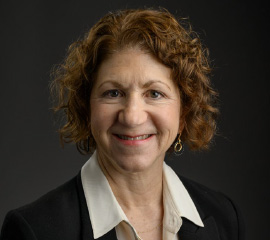
Laurie draws upon extensive experience in state and federal courts with a focus on complex claims involving medical malpractice cases. After many years of defending health care providers and hospital systems in medical malpractice cases, Laurie joined David Olesky in the national birth injury and medical negligence practice at Miller Weisbrod Olesky.
Laurie’s focus is to understand not only the facts and circumstances of the matter at hand, but to understand the specific needs and goals of the client and their unique business considerations. Her extensive background in commercial litigation provides a foundation that enhances her health care litigation practice. She works with clients that require more than a strong trial lawyer; they expect an attorney who understands the relationship between law and their specific business and who will work tirelessly to protect their rights, interests and bottom line.
Education
- Southern Methodist University:
Dedman School of Law - 1992
- Order of the Coif:
Journal of Air Law and Commerce, J.D. - 1992
- Miami University-Oxford, Ohio
B.S. Education - 1982
Areas of Practice
- Birth Injury/Birth Trauma
- Health Care Industry
- Health Care Litigation
- Litigation and Dispute Resolution
- Medical Malpractice
Associations & Memberships
- American Association for Justice
- American Bar Association
- Dallas Bar Association
- Dallas Bar Foundation Fellow
- Texas Bar Association
Distinctions
- Admitted to Pro Bono College of State Bar of Texas in 2019 for outstanding delivery of legal services to low-income Texans
Court Admissions
- United States Supreme Court
- U.S. District Court, Eastern District of Texas
- U.S. District Court, Northern District of Texas
- U.S. District Court, Southern District of Texas
- U.S. District Court, Western District of Texas
Linda Cuaderes

Linda Cuaderes is both a registered nurse and a licensed lawyer. Linda works exclusively in Miller Weisbrod’s Birth Injury and Medical Malpractice section. Linda acts as the firm’s patient advocate and liaison with our young clients and their parents.
Linda combines her legal and nursing experience along with her exceptional organizational talent and attention to detail to make sure each child we represent is provided the highest level of medical care and attendant care during the pendency of their case. Linda communicates with our parent clients regularly to monitor their birth injured child’s treatment, provide guidance as to additional care and therapies and when necessary assist them in obtaining specialized medical providers.
Linda was raised in Bartlesville, Oklahoma and completed her Bachelor of Science in Nursing with Honors at the University of Oklahoma. She started as an Oncology Nurse at Presbyterian Hospital in Oklahoma City, quickly becoming the Assistant Head Nurse of the Outpatient Endoscopy Unit. Linda then entered the University of Oklahoma College of Law.
Following graduation, Linda joined Les Weisbrod in the Medical Malpractice Section. After taking time off to raise her three lovely children, Linda returned to Miller Weisbrod and her passion of holding healthcare providers accountable for preventable errors. Linda is active in the American Association for Justice, Texas Trial Lawyers Association, Dallas Trial Lawyers Association, and the Texas Bar Association. Linda is an active member of the Birth Trauma Litigation Group and Medical Negligence Section of the American Association for Justice.
She is admitted to practice before the Texas Supreme Court and routinely works on cases pending throughout the United States. Linda has worked with child victims of birth injury, their parents and other victims of medical malpractice in Texas, New Mexico, Oklahoma, Arkansas, Louisiana, Iowa, Ohio, New York, Alabama, Georgia, Arizona, Utah and Missouri.
Education
- University of Oklahoma - School of Law, 1990, J.D. - Norman, Oklahoma
- University of Oklahoma - School of Nursing, 1985 - Norman, Oklahoma
Areas of Practice
- Medical Malpractice
- Birth Injury/Birth Trauma
Associations & Memberships
- Texas Bar Association
- American Association of Justice
- Texas Trial Lawyers Association
- Dallas Trial Lawyers Association
Kristin Jones

Kristin combines her medical and legal training to provide invaluable, passionate service to parents struggling to care for their birth-injured children. Families often have questions as they go through the birth injury lawsuit process. Kristin diligently identifies and investigates all medical issues so the birth injury attorneys at Miller Weisbrod can answer those questions. Kristin ensures that our birth injured children’s medical records are thoroughly reviewed and organized. Miller Weisbrod’s birth trauma litigation attorneys and medical experts retained by the firm need her services while pursuing justice for our clients.
Education
- SMU Dedman School of Law - Dallas, Texas
- University of Texas at Arlington - Arlington, Texas
Areas of Practice
- Medical Malpractice
- Birth Injury/Birth Trauma
Associations & Memberships
- State Bar of Texas
- American Association of Justice
- Texas Trial Lawyers Association
Matt Adair

Matt Adair is an attorney specializing in medical malpractice, products liability, and pharmaceutical litigation. He received his bachelor’s degree in Philosophy from the University of Notre Dame. During his time there, he studied abroad at the New College at Oxford University in Oxford, England.
Matt is a member of the State Bar of Texas, American Association for Justice, Texas Trial Lawyers Association, and Dallas Trial Lawyers Association.
Education
- University of Notre Dame - Philosophy, B.A. 2012 - Notre Dame, Indiana
- Baylor University - School of Law J.D. 2015 - Waco, Texas
Areas of Practice
- Medical Malpractice
- Products Liability
- Pharmaceutical Litigation
Associations & Memberships
- State Bar of Texas
- American Association of Justice
- Texas Trial Lawyers Association
- Dallas Trial Lawyers Association
Garrett Stanford

Garrett Stanford was born in Dallas, Texas and graduated from Southern Methodist University in 2017 with a B.A. in Political Science. After graduation, he attended Baylor University School of Law. During his time at Baylor, he was a member of the Order of the Barristers and he won the Judge W.C. Davis Endowed Criminal Practice Professional Track Award. He obtained his law degree and license to practice law in 2020.
Garrett joined Miller Weisbrod in August 2021. His legal practice is concentrated in the area of birth injury and medical malpractice. Garret is actively involved in handling birth injury and medical malpractice cases in Texas, Ohio, Utah, Arkansas and Oklahoma.
Education
- Southern Methodist University - Political Science, B.S. - Dallas, Texas
- University of Baylor - School of Law, J.D. - Waco, Texas
Areas of Practice
- Medical Malpractice
- Birth Injury/Birth Trauma
Associations & Memberships
- State Bar of Texas
